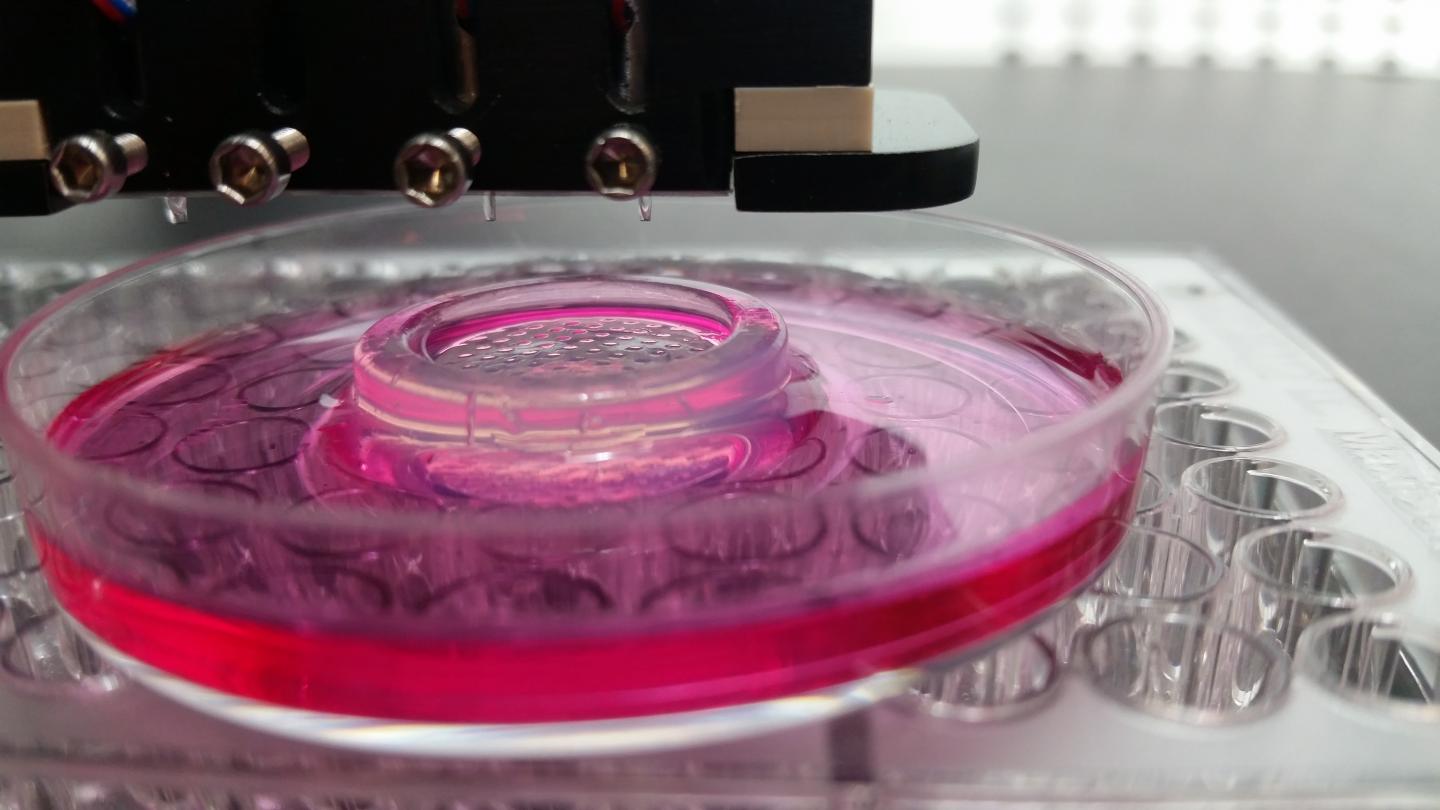
Credit: Ozbolat Lab, Penn State
Ibrahim Tarik Ozbolat, Hartz Family Career Development Associate Professor of Engineering Science and Mechanics, has received four grants totaling about $1.5 million to explore ways to bioprint biological tissues like bone, lungs and other organs for use as models in a variety of studies.
The National Science Foundation has awarded him a three-year, $448,539 grant to explore a new process for 3D bioprinting that could be a solid base for the future creation of implantable, bioengineered tissues and organs. These bioprinted organs and tissue would not require immunosuppressant drugs or have other shortcomings associated with transplants.
Ozbolat will use aspiration-assisted bioprinting to position the building blocks of tissue rapidly and precisely so that tissues and tissue models to use for drug development, lesion studies or replacement parts become possible.
The project will investigate a number of current questions about bioprinting of cell spheroids, their size, density, mechanics, placement and ability to survive.
Ozbolat is also a subcontractor for a new National Institutes of Health Cooperative Center on Human Immunology supported by a five-year, $11 million grant to the Jackson Laboratory by the National Institute of Allergy and Infectious Diseases. His $900,000 will support development of 3D bioprinted models of the lung and upper respiratory environment to mimic and explore the functional lung and immune system interactions and determine the mechanisms and pathways involved in lung antiviral response or response to metabolic agents.
Work on a two-year, $75,000 award from the Osteology Foundation in Switzerland will focus on bioprinting bone. Ozbolat, along with Elias Rizk, associate professor of neurosurgery at Penn State College of Medicine, will explore using 3D bioprinting capabilities to repair critical-sized bone defects on 3-year-old Rhoen sheep to investigate the feasibility of repairing skull, jaw and facial injuries or defects. The goal is to develop ways to transfer this bioprinting method to clinical use and to build the fundamentals of tissue printing technologies for surgical settings.
Also focusing on bone is a $65,000 grant to create a 3D bone tissue model to study Gaucher disease from the Lysosomal and Rare Disorders Research and Treatment Center. Gaucher disease is an inherited genetic disorder that among other things can create bone abnormalities and arthritis. The focus of this research is to bioprint a model in which to study Gaucher disease in the laboratory.
###
Media Contact
A’ndrea Elyse Messer
[email protected]




